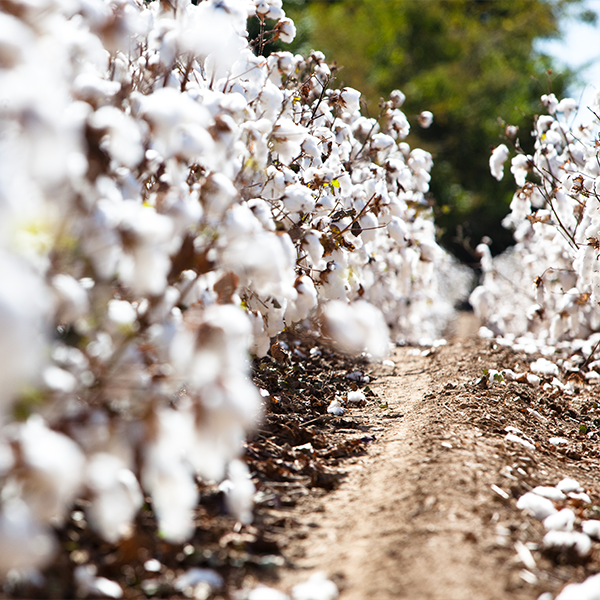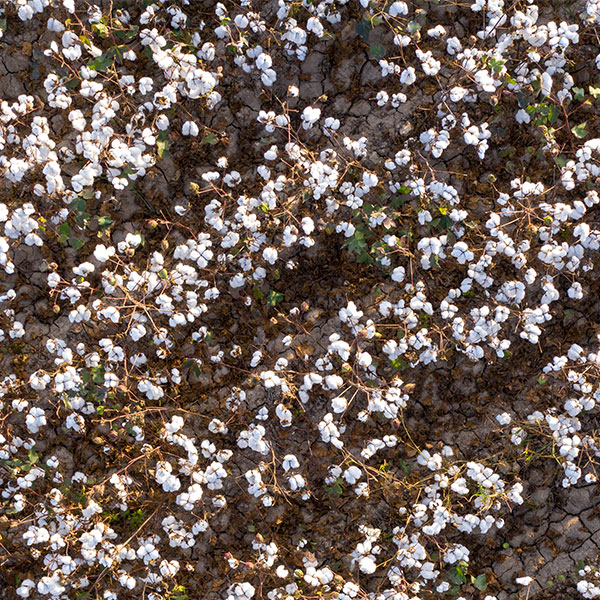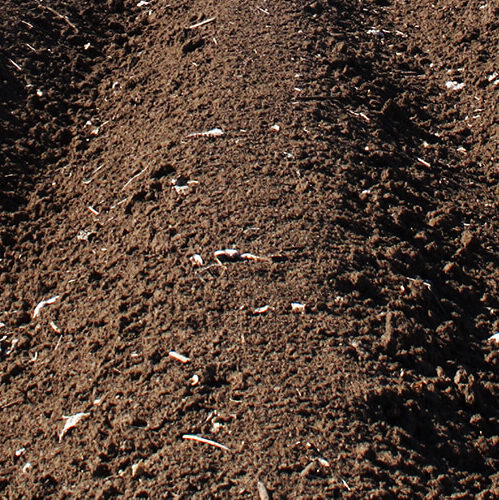
Carbon is a perennially hot topic in the cotton industry. As we navigate the effects of climate change and the need to reduce greenhouse gas (GHG) emissions, we’re also serving consumers with a rising interest in the sustainability of the brands and products they buy. Cotton has a unique role in the carbon equation, as cotton plants naturally—and very efficiently—sequester carbon in the soil and in the fiber itself.
Q&A with Dr. Jesse Daystar, Chief Sustainability Officer, Cotton Incorporated
We sat down with Dr. Jesse Daystar to discuss the unique relationship between cotton and carbon—and the sustainability efforts underway in the cotton industry.
At a high level, what carbon-related actions do we need to take to help address climate change?
To move the needle on sustainability and climate change more broadly, there are 3 key principles for what we need to do with carbon: mitigate, capture and store, or extend its useful life.
In other words, we need to stop letting carbon out, keep more of it in its physical form and keep it for longer. And, that’s exactly what we’re working on across every stage of cotton production.
How does cotton mitigate, capture and/or extend the useful life of carbon?
The first thing to keep in mind is that cotton is carbon. Cotton products are made of biogenic carbon that captured CO2 from the atmosphere during the growth of the cotton fiber. Biogenic carbon originates in the air but is taken in by plants, animals, trees, and soil. The cotton plant happens to be very efficient in removing CO2 from the atmosphere and storing it in the soil and cotton fiber.
So, when you have a closet of full of cotton products—because cotton plants have captured and stored carbon—it’s similar to the way trees and plants maintain carbon in a forest. As the world’s population grows, there will only continue to be more cotton in more closets, which will continue to reduce CO2 in the atmosphere.
To see the greatest benefit of all this carbon captured and stored, we have to extend the useful life of cotton products (and therefore their carbon). At the end of a product’s life, when it decomposes or is burned, the carbon will be oxidized and released back into the air as CO2. We want to delay this as long as possible. That’s why we embrace and enhance the circular lifecycle of cotton.
As a natural fiber, cotton can be reused, recycled,¹ and returned to the earth.² We’re continuously exploring the most carbon-smart approaches to each of these intersecting circular paths. Enhancing the durability of cotton products, for example, may help give them a longer life with their original owner and for reuse on the secondhand market. It also could support textile-to-textile recycling of 100% cotton textiles for use in new apparel and home good products. Eventually, however, all cotton reaches the end of its useful life. We’re researching solutions for industrial-scale cotton composting that can put the carbon back in the soil instead of the air.



How are carbon efforts integrated into the work of Cotton Incorporated?
Since cotton is carbon, we’re also in the business of carbon. Cotton Incorporated’s mission is to increase the demand for and profitability of cotton through research and promotion. Sustainability, which includes all carbon-related efforts, is core to that mission—and it’s not new. In the past, we’ve called it other things, like efficiency. Now, we have different language and a renewed focus.
Every part of our organization touches sustainability, which is interrelated to efficiency. Throughout the process of growing, manufacturing, and using cotton, we’re identifying and helping the industry implement ways to create higher yields with fewer resources.
Our Agricultural & Environmental Research division focuses on how we can grow more cotton with less money and less of an environmental impact using regenerative agriculture practices and other measures. Cotton Incorporated funds research at land-grant universities and private universities; currently, we have more than 400 research projects in progress, and most are related to sustainability and carbon due to that link between efficiency and sustainability. We’re looking at everything from better use of nitrogen fertilizers to improving soil health. How do we manage pests to increase yield? How do we get around viruses and plant disease? We’re exploring it all.
Our other divisions also have a role to play. In Product Development and Implementation, we’re finding new ways to improve processes for efficiency. This includes reducing the amount of water and types of chemicals as well as developing the finishes and technologies that make cotton garments and other products last longer. Our Marketing division supports all our efforts by helping to educate key audiences about carbon and sustainability more broadly.
Again: every part of Cotton Incorporated ultimately relates back to carbon.
What are some of the carbon-focused research projects and other initiatives Cotton Incorporated is working on?
Our talented team is leading so many research projects and collaborations focused on different aspects of cotton’s life cycle—here are just a few examples.
- Regenerative Cotton Fund with the Soil Health Institute, Ralph Lauren, and other collaborators – an effort to measure and increase the carbon in the ground in organic matter.
- Climate Smart Cotton, a USDA Partnership for Climate Smart Commodities pilot project – a grant to provide technical and financial assistance to over 1,600 U.S. cotton farmers, advancing the adoption of climate-smart practices on more than one million acres.
- Soil and Water Outcomes Fund and National Cotton Council of America – work to educate and engage cotton growers with carbon markets.
- North Carolina State University and the Australian Cotton Research and Development Corporation – a project to map carbon flows from the very beginning to the very end of a garment’s life.
- Blue Jeans Go Green™ denim recycling program – a program to promote cotton recycling into insulating material for various applications like building insulation, thermal packaging insulation, pet bed inserts, and other applications.
Looking at longer-term goals, where would you say we are on the path to net zero?
Cotton producers and industry organizations here in the U.S. have set and are making progress toward 10-year sustainability goals. All of the goals are interconnected, but, by 2025, we specifically are working to increase soil carbon by 30% and decrease greenhouse gas emissions by 39%.
Now, people sometimes talk about net zero emissions as the “ultimate” goal, and I don’t necessarily see it that way. Yes, it’s an important goal—but, ultimately, I would love cotton to be net negative. Within the textile/apparel space, cotton has a unique opportunity not only to reduce climate change impacts but perhaps to capture more carbon than it releases. Cotton currently does that on a cradle-to-gate basis, meaning that, up until a product is processed, the cotton in it has captured more emissions than it has released. As we continue to improve our practices and processes throughout cotton’s life cycle, especially during manufacturing/finishing and through recycling/composting, we hope to reach a net negative for carbon’s entire life cycle. A key aspect of reaching net zero or negative is closing the cotton loop and returning carbon to the soil, for example.
What keeps you energized to do this sustainability work? What gives you hope about progress to date?
We’re seeing more extreme weather that hurts humans, hurts agriculture, and hurts cotton—so that certainly is a challenge. However, we’re also seeing movement in terms of how we look at the issue as a society as well as research and action from governments and industry. We’re seeing change, not just on the brand side, but all the way down the supply chain.
I’m encouraged by everything we’ve discussed here and all the work we’re doing in cotton. We’re making progress against our 10-year sustainability goals, as I mentioned, and U.S. cotton protocols are helping the industry measure and encourage best practices with tools like the Fieldprint Platform from Field to Market: the Alliance for Sustainable Agriculture.
There’s still work to be done, and many opportunities across the supply chain in areas like renewable energy and more efficient equipment, just to name a few. What’s important is including everyone in our efforts for continual improvement. We can’t say “we’ll only source from the best and forget the rest.” We need to engage and work with producers and manufacturing facilities that have yet to adopt best practices – that’s where we’ll be able to improve the most.
Ultimately, we need to be both realistic and hopeful. The climate will continue to change—it’s just about how much. Each of us needs to focus on what we can do to help and contribute to larger organizational and industry efforts. We can’t solve it alone—we have to work together, and that’s exactly what the cotton industry is doing.

Dr. Jesse Daystar leads sustainability research and implementation programs at Cotton Incorporated from field to fashion.
Well-versed in the complexities of sustainability, Jesse breaks down the science and metrics, for consumers and experts, of how cellulosic fibers are grown and apparel is made, used, and discarded for the health of the planet. His research has produced numerous publications on sustainability and engineering tools; and certifications for clients including the USDA and the U.S. Department of Energy.
1. Cotton products are recyclable only in a few communities that have appropriate recycling facilities.
2. In composting tests, cotton fabric samples underwent a weight loss of approximately 50-77% after 90 days in a composting facility. Li, Lili; Frey, Margaret; Browning, Kristie (2010). Biodegradability study on cotton and polyester fabrics. Journal of Engineered Fiber and Fabrics, 5(4), 42-53.